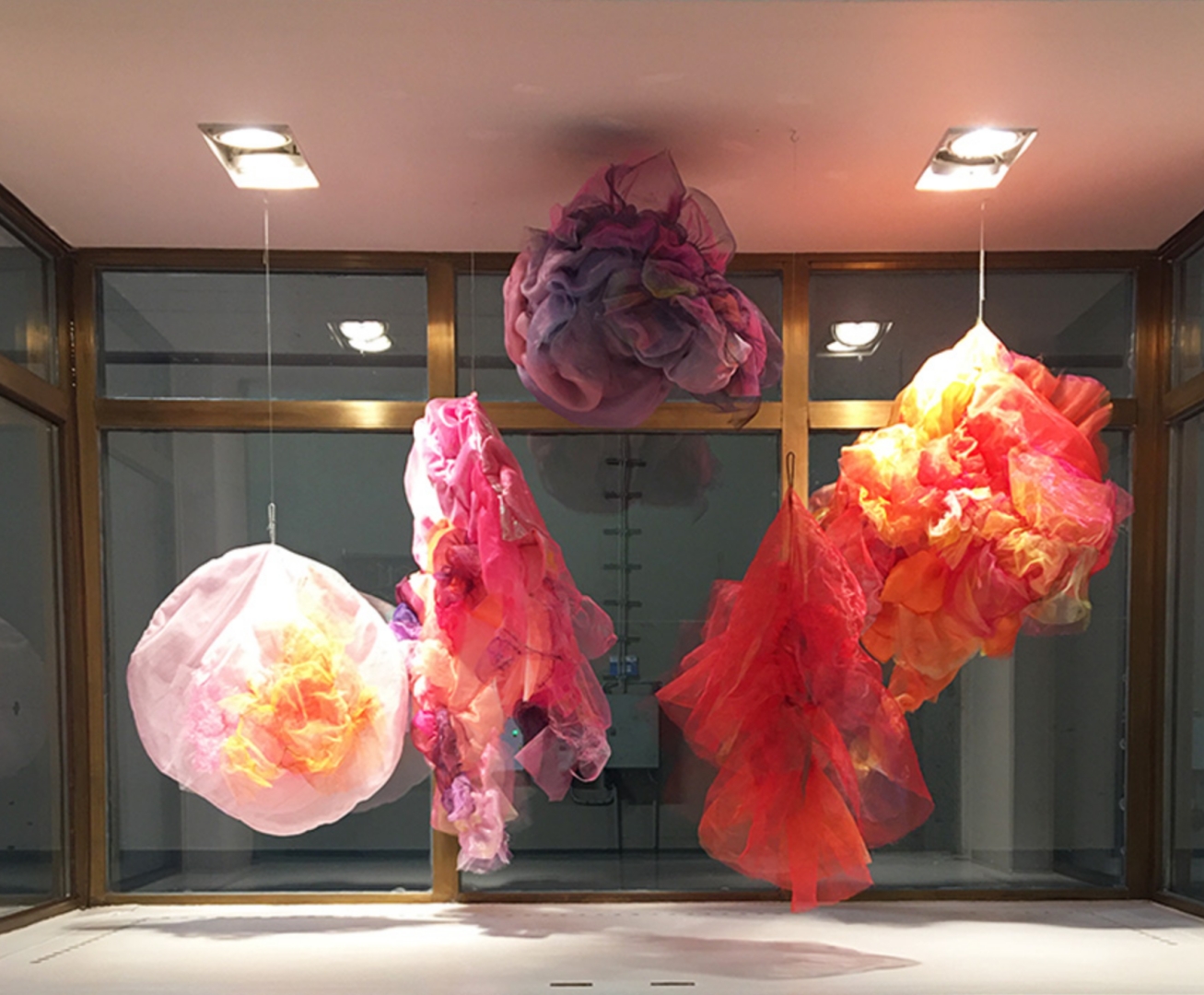In Kaarina Haka’s installations, it is interesting to look at the abundance of materials and the dialogue of colors, how they work together. The luxuriously shiny textiles and soft shapes entice you to explore in more detail from different directions. Someone finds in the work a quietly swaying undersea garden, another a rampant fairytale forest with elves. In any case, the sprawling ensemble with its abundant shapes, sparkles and colors attracts.
-The starting point of my installations is painting, the idea of how colors and shapes settle in a space, creating a three-dimensional painting. When I work, I think about the basic elements of painting, such as composition, contrasts, lights and shadows, opacity, transparency, atmosphere, feel of materials, layering and repetition.
The whole exhibited in the OHO Gallery consists of sewn parts. I have used organza and tulle as material; I like their lightness, abundance of selection and easy adaptability to many different techniques. The work is based on the works that were previously in Galleria Huudo 2021 and Supermarket at the Stockholm art fair 2021, which I have dismantled and put together again in a new way. Circulating materials from one work to another is part of a continuous process. The works live and change and may end up looking very different in different installations. They are never actually completed.
I don’t plan the hanging in advance, and the whole is always built only in the exhibition space, where the parts of the work make contact with each other, the space and the audience. Many things affect the way the work is built in the space, such as lighting, the structures and details of the space, air currents, atmosphere, etc. – Kaarina Haka
Kaarina Haka (b. 1974) studied at the Academy of Fine Arts 1996–2008 and graduated with a master’s degree in fine arts from the department of painting. He has also studied in Denmark (1995–1996) and Iceland (1999–2000).
Haka makes installations whose starting point is painting. He is interested in the different colors and feelings of materials, as well as how they work together. Painting installations create different visual impressions, when a two-dimensional object seen from a distance turns into a three-dimensional one.




